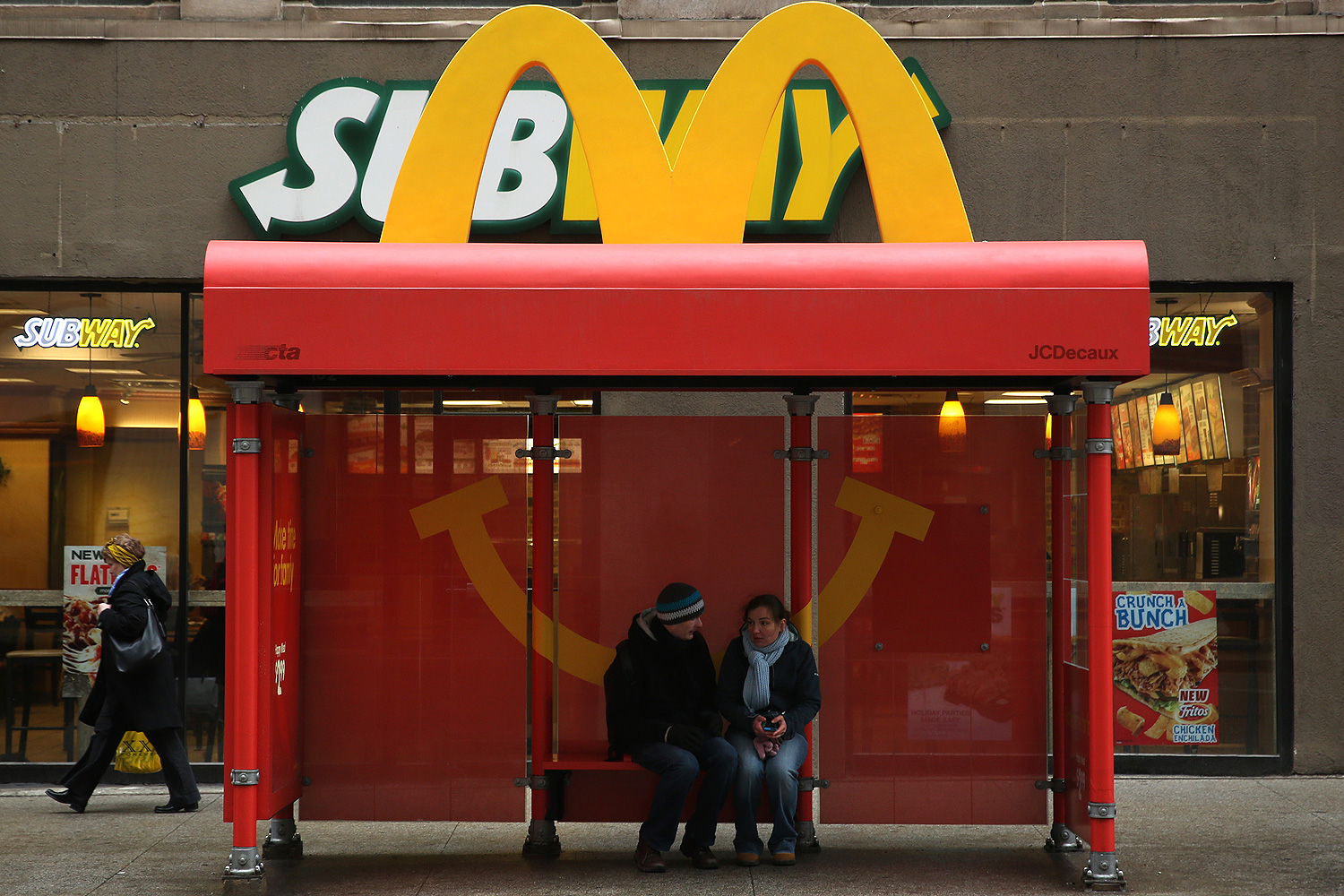In Chicago's March issue, Ben Austen profiled then-McDonald's CEO Don Thompson, who'd risen from the shadow of Cabrini-Green to one of the most powerful positions in American business. And Austin pushed Thompson on the Fight for $15 protests that had dominated its recent news:
So why not do something bold on workers’ pay? I asked Thompson. If McDonald’s led, others would surely follow. Improving pay might even help transform the perception of the brand.
Thompson calmly replied that he was one of the few leaders in the fast-food industry to state publicly that the minimum wage should be increased—slowly and combined with tax credits, special reduced training wages, or other ways to lessen the burden on small businesses….
A sudden wage increase (to say nothing of a union) would place an undue burden on franchisees, he argued, thus unbalancing the “three-legged stool”—which, under Turner’s tutelage, Thompson had come to see as sacrosanct. “This system is this system,” he uttered, like a tautological koan. “It’s made not just by the company but by the combination of all three parts working together. It’s what makes McDonald’s very special.”
Shortly after that interview, Thompson was fired, the victim of McDonald's flatlined sales.
A new CEO, Steve Easterbrook, took over on the first day of last month. On the first day of this month, the Wall Street Journal reports, he's raising the minimum wage at all company-owned restaurants (about ten percent of all McDonald's, the rest being franchises) to a dollar over the local minimum.
It's not a huge increase, from about nine to ten dollars on average. On the heels of wage increases at Wal-Mart and Target, it suggests a modest victory for wage protests, though wage pressures could well be part of the equation (via Bloomberg):
Wage pressures were moderate across most Districts, but some contacts reported increased wages to attract skilled workers for difficult-to-fill positions. In particular, service sector firms in the New York District noted increasingly widespread reports of wage hikes. Contacts in the Cleveland, Richmond, and Kansas City Districts noted increased wage pressure due to the difficulty in attracting and retaining truck drivers. A staffing firm in the Chicago District reported some companies were also willing to raise rates for unskilled workers to reduce turnover, and contacts in the Atlanta District noted increasing entry-level wages.
And… it could well be a business decision, too. The recent round of protests, and the legislative interest in minimum-wage increases that's followed has generated examinations of how businesses would be affected by a minimum-wage increase.
Seattle, for instance, just raised its minimum wage, but not before employing some Berkeley economists to tell them what might happen. They found that it wouldn't lead to substantial price increases:
Price effects outside the restaurant industry are largely negligible. Benner and Jayaraman (2012) provide estimates of price impacts across industries for a $10.10 federal minimum wage increase. They estimate that if the entire cost were passed through to prices, restaurant prices would increase 2.5 percent over three years, retail food 1 percent, warehouse and storage and accommodations 0.7 percent, and administrative and support services 0.9 percent. In most other industries, price increases could not be detected.
A 2.5 percent increase on a five-dollar burger comes out to about thirteen cents.
A small price increase isn't surprising. But when economists started looking deeply into the effects of wage increases, what they found, and didn't know, surprised them. Or to put it like an economist: "a [minimum-wage] cost increase flows through more adjustment channels than economists have typically considered." Translation: gosh, businesses have more expenses than we thought.
One of those expenses that they've since turned their attention to is a hard one to measure: turnover. And recent research suggests that wage increases lower turnover:
We find striking evidence that separations, hires, and turnover rates for teens and restaurant workers fall substantially following a minimum wage increase—with most of the reductions coming within the first three quarters of the higher minimum. For a 10 percent minimum wage increase, turnover rates decline by around 2.0 percent for teens and 2.1 percent for the restaurant workforce.
That's another "adjustment channel." If replacing employees costs a couple thousand dollars each in direct and indirect costs, why not give it to employees in order to retain them?
The importance for McDonald's could be even greater. In 2013, there was an internal panic about customer service, from speed (drive-through times were three minutes, compared to two at Wendy's) to friendliness (next-to-last in the rankings), as the VP of business service said that "service is broken." The beloved and sadly Western U.S.-only chain In-N-Out has been paying its employees above minimum wage for years, and has the turnover numbers that follow, including an impressive average tenure of two years for part-time workers.
McDonald's wage increase is, again, only for company-owned stores, some 1,500 out of around 15,000. But as the company struggles to find out what consumers want, it could yield benefits to itself by listening to what its employees want.



